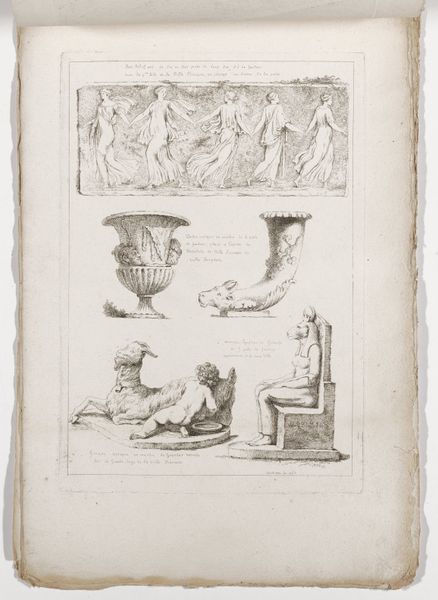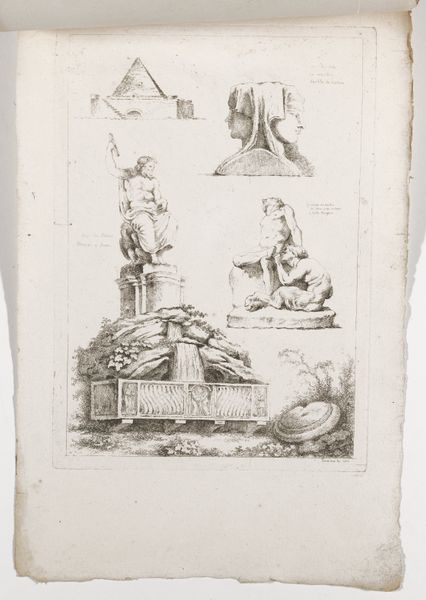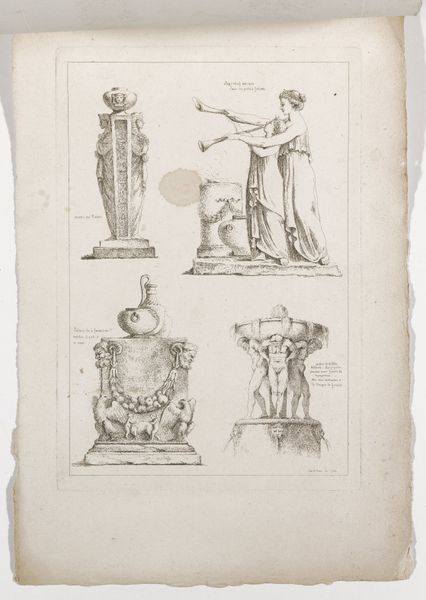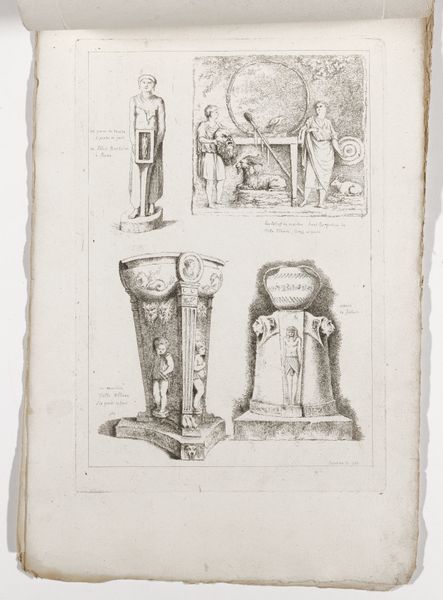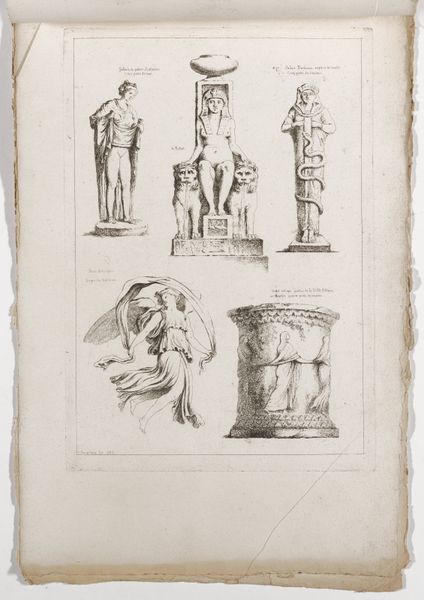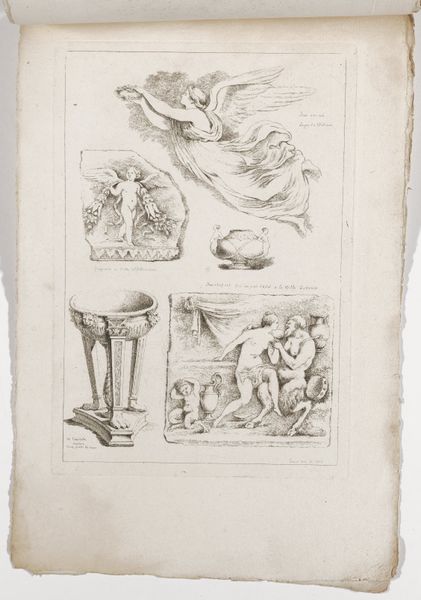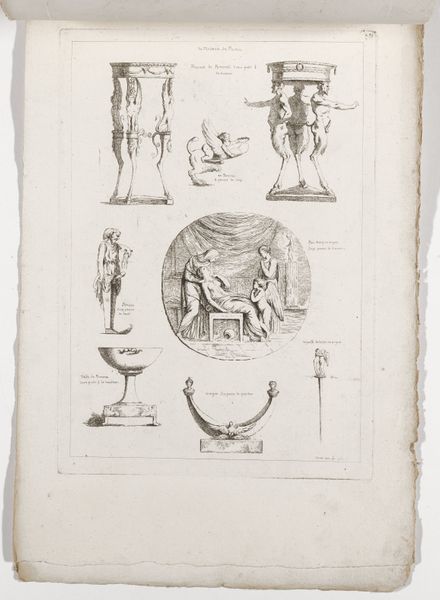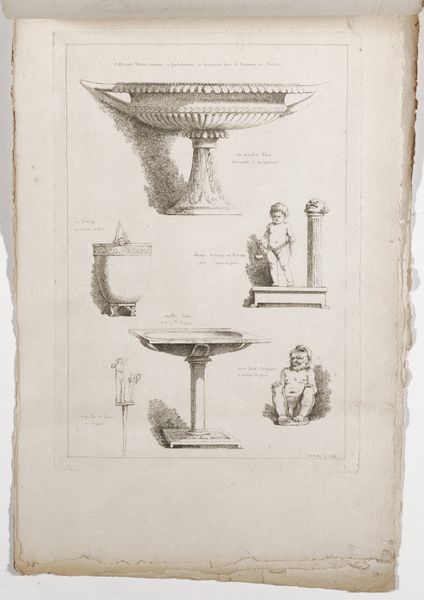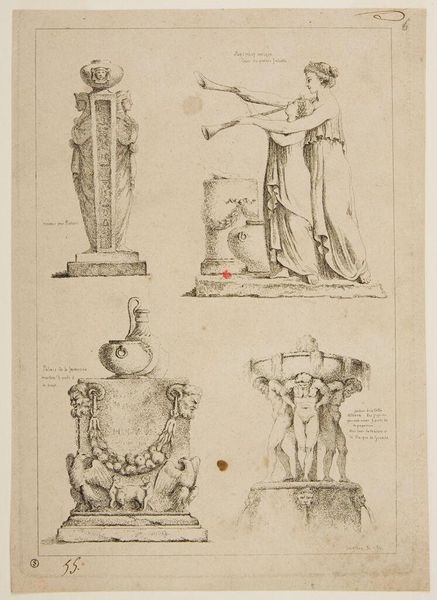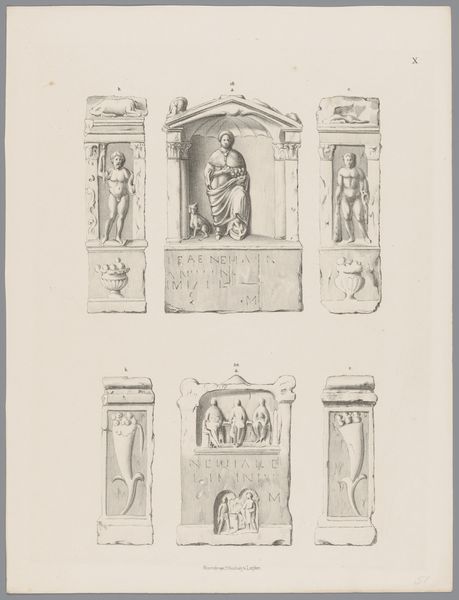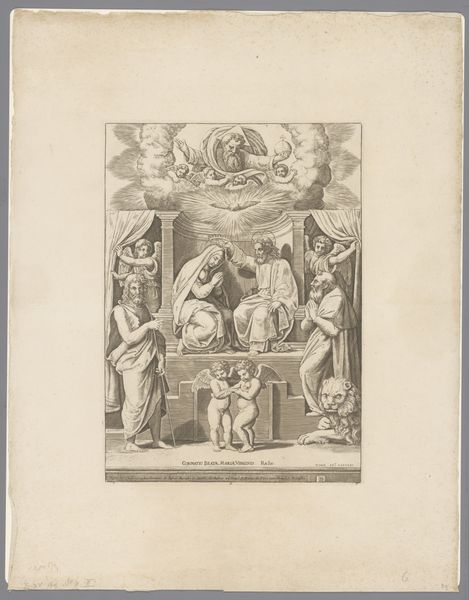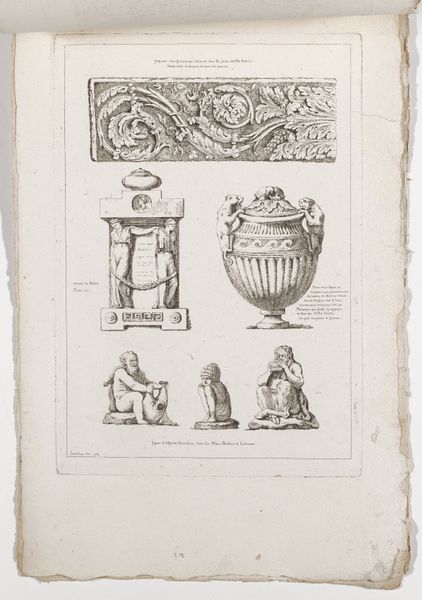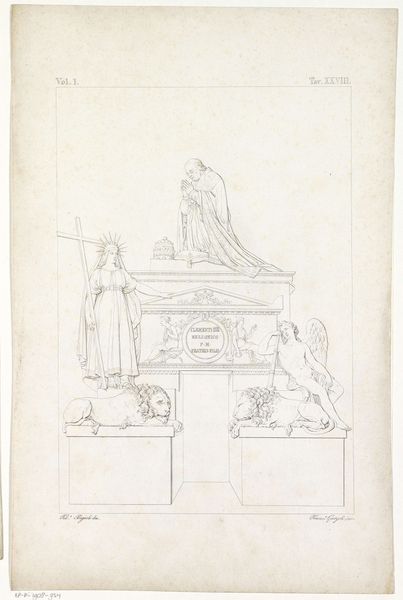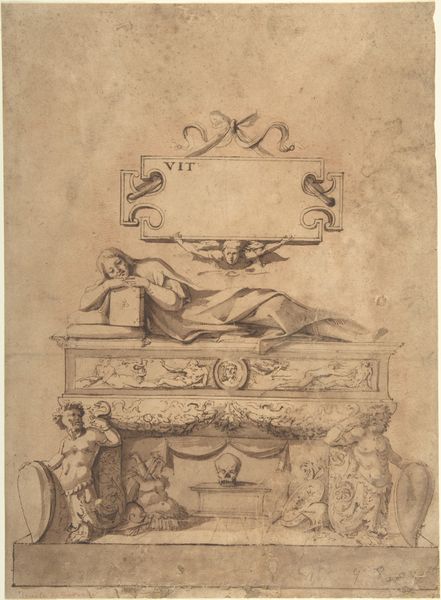
drawing, print, etching, paper, engraving
#
drawing
#
neoclacissism
# print
#
etching
#
figuration
#
paper
#
france
#
history-painting
#
engraving
Dimensions: 12 13/16 × 8 3/4 in. (32.54 × 22.23 cm) (plate)16 7/8 × 11 5/16 in. (42.86 × 28.73 cm) (sheet)
Copyright: Public Domain
Editor: This is "Fascicule II", a 1763 etching and engraving on paper by Jean Claude Richard, Abbé de Saint-Non. The arrangement of these neoclassical figures and motifs reminds me of a page from an archaeological sketchbook. What strikes you about this print? Curator: That’s an insightful observation. For me, the "archaeological sketchbook" feel really gets at the heart of what Neoclassicism was about. Consider the late 18th century. The excavation of Pompeii and Herculaneum was underway, and suddenly, there was a renewed fascination with antiquity. What kind of a social function do you think images like this one, with their depiction of ancient scenes, might have served in that time? Editor: Maybe they helped popularize the visual vocabulary of the classical world, creating a sense of shared cultural heritage. Did they aim to do more than simply record? Curator: Absolutely. Prints like this helped to create and circulate an idealized vision of the past. The composition evokes a sense of order, reason, and civic virtue -- qualities associated with classical antiquity, and, aspirationally, with contemporary society as well. They were explicitly contrasted to what was regarded as the frivolous excess of the preceding Rococo style. Editor: I see. It’s like they were constructing a particular narrative about history. It's interesting how artistic taste and social values can become so entwined! Curator: Precisely. And this image is an active participant in shaping the tastes and values of its audience. Look closely: note the ways this imagery evokes authority of this classical past. Images like this actively influenced politics, fashion, and architecture. So much was at stake. Editor: This print, initially seemingly simple, reflects wider cultural currents that are truly complex! I will think of it as a social object, not just a beautiful engraving.
Comments
minneapolisinstituteofart almost 2 years ago
⋮
The Jean-Baptiste Claude Richard (also known by his title abbé Saint-Non) embodied the important role of the amateur, an patron and connoisseur of the arts as well as a practitioner in 18th-century France. He was a skilled networker, a curious, innovative printmaker, and he supported his artist friends in their projects and travels. Saint-Non executed this suite of prints in Paris in 1763, representing antique fragments and reliefs he saw during his travels in Italy from 1759 to 1761. Most of the monuments are identified in the inscriptions by their locations in Rome. The works reflect French artists’ fascination with antiquity at the time, and the way in which these sources were transmitted to a larger public through the circulation of prints. Remarkably the suite of etchings remain as originally issued, in three groups of six deckle-edged sheets stitched together simply along the top edge.
Join the conversation
Join millions of artists and users on Artera today and experience the ultimate creative platform.
